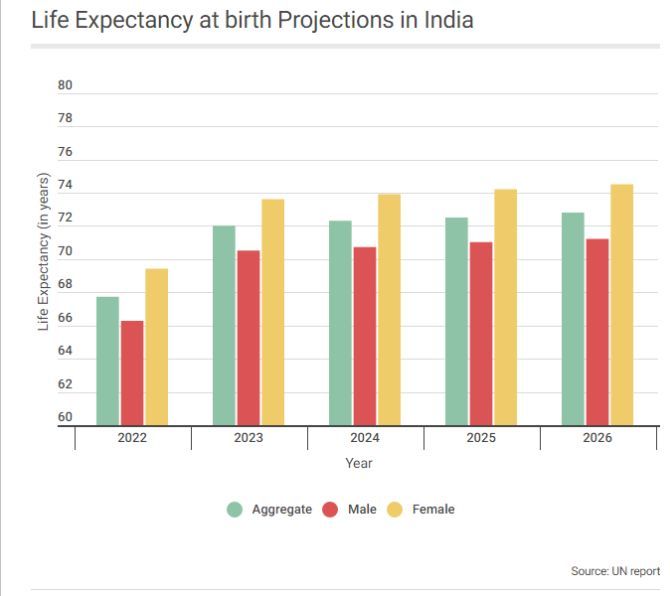By 2030, 600 million people will be living in cities in India, representing 40 per cent of the population..

On Tuesday, the world's population surpassed the 8-billion mark, and India will overtake China as the most populous nation in July 2023, a UN report has said.
According to the 2022 Revision of World Population Prospects, on July 1, 2023, India will have 1.428 billion people, as against China's 1.425 billion.
However, India's total fertility rate (TFR) stands at 2 -- below the ideal replacement rate of 2.1.
According to the UN, in 2023, the TFR will fall below 2.
The world's TFR, on the other hand, stands at 2.31. After 40 years, in 2063, India will touch the peak of its population at 1.69 billion.
However, the world's peak will be achieved in 2086 at 10.4 billion.

"Human capital investment is still much lower in India than in many countries. Just having a young population does not ensure a demographic dividend. The population has to be skilled and get a platform to work. Indian youngsters are highly talented even in challenging situations. Quality education with some incentives can do wonders," said Nandita Saikia, professor in public health and mortality studies, International Institute for Population Sciences.
India's urban infrastructure would require an investment of $840 billion -- 1.18 per cent of the estimated GDP -- over a period of 15 years till 2036, according to a World Bank report released on Monday.
The report, titled "Financing India's Infrastructure Needs: Constraints to Commercial Financing and Prospects for Policy Action", says India's capital expenditure in urban infrastructure averaged 0.63 per cent of the GDP between 2011 and 2018.

Urban Local Bodies (ULBs) set up under the 74th amendment of the Constitution are administered to provide basic infrastructure services to people in urban areas.
A Business Standard analysis shows that expenditure by ULBs had declined by 16.13 per cent in 2019-20 to Rs 2,281.04 crore from the previous year.
In 2019-20, human resource expenses accounted for 47.04 per cent share of the total expenditure, followed by development/programme expenses (31.42 per cent).
With India moving towards urbanisation, its requirement for financing is also increasing.
By 2030, 600 million people will be living in cities in India, representing 40 per cent of the population, says the report.
It also shows that state governments have remained the primary source of funds for capital expenditure by ULBs.
ULBs finance 15 per cent of the city infrastructure through their own surplus revenues.
Over 75 per cent is financed by the central and state governments.

Between FY11 and FY18, the revenue of ULBs has remained at around 1 per cent of GDP.
The analysis shows that grants from the government have remained their main source of revenue -- 50.22 per cent between 2015 and 2020.
Own revenue's share was 30.04 per cent in the same period. Own revenue of ULBs declined by 47.24 per cent to Rs 876.36 crore in 2019-20 from the previous year.

Further analysis shows that the own revenue of ULBs falls short of meeting their revenue expenditure.
In 2019-20, own revenue was short of Rs 688 crore for meeting the revenue expenditure of ULBs.











